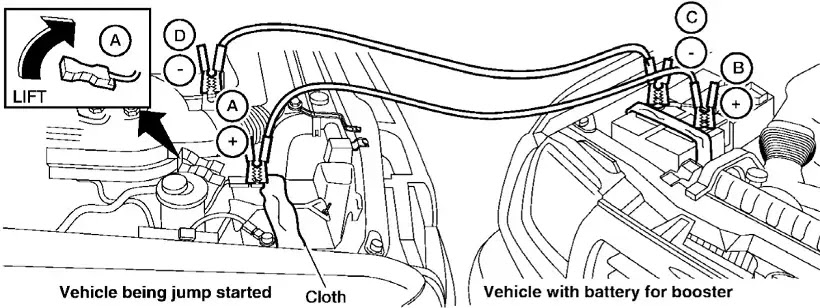How to Jump Start a Car with Another Car
How to jump-start a car with another car? you need to have a jumper cable and another car to serve as a booster battery for the car that won't start.
If the car won't start because of a dead battery? Jump starting a car is easy but should be done correctly so that accidents such as a battery explosion can be avoided that may result in the damage of your car or worst injured you. If you jump-start a car, avoid the use of the frozen battery. Also, check the battery rating of each battery for the correct rating before jump-starting.
Jump starting a car with another car if not done correctly can lead to a battery explosion, resulting in severe injury or death. It could also damage your car. damage your car. Explosive hydrogen gas is always present in the battery. Keep all sparks and flames away from the battery.
Do not allow battery fluid to come into contact with your eyes, skin, clothing, or on the painted surfaces of your car. Battery fluid is a corrosive sulfuric acid solution that can cause severe burns. If the fluid should come into contact with anything, immediately flush the contacted area with water.
Whenever working on or near a battery, always wear suitable eye protectors (for example, goggles or industrial safety spectacles) and remove rings, metal bands, or any other jewelry. Do not lean over the battery when jump starting. Do not attempt to jump-start a frozen battery. It could explode and cause serious injury. The most car has an automatic engine cooling fan. It could come on at any time so keep your hands and other objects away from it.
How to Jump-Start a Car with Another Car
Step 1. To jump-start a car with another car you need to have a jumper cable and another car to serve as a booster battery for the car that won't start. Park the car with a booster battery near the car needed to jump-start. The booster battery must be rated at 12 volts. The use of a not properly rated battery can damage your car. If the booster battery is in another car, position the two cars to bring their batteries near each other, but make sure that both cars don't have contact with each other.
Step 2. Engage the parking brake of both cars for safety purposes. Make the gear positioning to a neutral position. If the car has an automatic transmission position the shift lever to park (P) position.
Step 3. Both of the electrical equipment and accessories for both cars must be turned off before jump-starting. Remove vent caps on the battery (if equipped). Cover the battery with an old cloth to reduce explosion hazards.
Step 4. Open the hood and connect the jump start cable on each car in the sequence as shown in the illustration which is positive to positive and negative to negative in sequence A-B-C-D. Always connect positive to positive and negative to body ground (for example, strut mounting bolt, engine lift bracket, etc.) — not to the battery. Make sure the jumper cables do not touch moving parts in the engine compartment and that the cable clamps do not contact any other metal.
Step 5. Check if the gear is in a neutral position then start the car with a booster battery. Start the engine of the booster car and let it run for a few minutes. Keep the engine speed of the booster car at about 2,000 rpm, and start the engine of the car being jump-started.
Step 6.If the car to be jump-started won't start turns the ignition "OFF" and wait for 3 to 4 seconds then start the car again. Do not keep the starter motor engaged for more than 10 seconds. If the engine does not start right away, turn the key off and wait for 3 to 4 seconds before trying again.
Step 7. After starting the engine of the car being jump-start leave the jump lead stay connected for about 5 to 1o minutes so as not to over heat the alternator because a dead battery is such a huge load, after 5 minutes carefully disconnect the negative cable and then the positive cable. Make sure you disconnect the cable in reverse sequence D-C-B-A as illustrated above. Return the vent caps (if so equipped). Be sure to dispose of the cloth used to cover the vent holes as it may be contaminated with corrosive acid.
Help us expand the people we help by sharing this information with others. Thank you !!!


Comments
Post a Comment
Share with us what you think about this topic to help others know more information that this article did not cover.
Kung may tanong po kayo comment lang po, at sasagutin namin sa mga susunod na araw. Marami pong salamat!